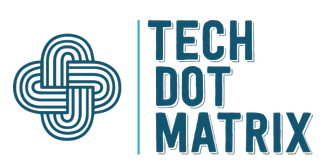
In an agile environment, defect tracking tools are utilized by the software development teams to essentially detect issues, report them, and track their progress throughout the development lifecycle. Traditionally, in the waterfall approach, defect tracking and management was limited to the quality assurance or testing teams, however, with the rise in popularity of DevOps and agile methodologies, it is encouraged that all teams should be involved in the defect tracking process.
The most proficient defect tracking system integrates with the existing communication sources and monitoring tools that are used in the company and takes into account the bugs and issues that are reported through other mediums like emails. With the help of an effective defect tracking system, the project teams and managers should be able to have a snapshot of all the open issues in the system. Given that this shows them exactly how much work is left and what needs to be done, this aids them in the decision-making process of allocating human and financial resources to the individual defects in each sprint or release.
Best Features for Defect Tracking System
Defect tracking tools are specially designed in a way which facilitates the collaboration between team members and to bridge any communication gaps between them. As opposed to other tools and software, defect tracking has a more holistic approach as it incorporates and supports all aspects and features of the software application to be logged and tracked in one place. Ranging from the reported issues and defects to the new user stories and features, this tool aims to provide a birds’ eye view of the whole project to the team members.
Defect tracking system empowers the project teams to stay ahead of test cases and defects or bugs that have been assigned to them. The notification system that is set to notify them about any new cases or issues, any modifications, or changes in the system which in turn saves a lot of time and effort. Instead of going to multiple sources and mediums to check up on the progress of the issues and cases, the flexibility and customizable features of this system makes it easier for the team to monitor and triage defects. In addition to that, defect tracking software lets the team members add tags to the cases and issues, and with the advanced search and filters, they are able to view the list of all tagged cases and issues. Dedicating the same resources to all defects and issues irrespective of their impact and urgency is a waste of resource, thus, defect tracking uses metrics like severity and priority to determine the nature of the issues. A defect’s high level of priority and severity is given preference over others and so, the efforts of the development team are targeted towards it.
Steps for Defect Tracking and Management
There are four main steps in the defect tracking and management process which are a prerequisite for the application and integration of this software in the development lifecycle.
1. The first step in the process is the detection of defects by testers, developers, or the users. The fundamental objective of these tools is to identify and highlight all possible bugs and issues in the early stages of the development lifecycle. Every subsequent step, technique, and even the reliability of the quality assurance process is dependent on this step.
2. Generating bug reports is essential for the effective application of the defect tracking system. The reports are comprehensive and detailed, containing all information about the history and facts regarding the reported bugs. These reports are especially useful in laying the groundwork for developers when it comes to resolving the issues.
3. After the issues and defects have been reported and logged in the database with all their pertinent information, they are assigned resources for the resolving process. The defects are fixed by the developers in the order of their priority and severity, and with the help of the data recorded in the central repository. After resolving the issue, it is then sent to the quality assurance team for validation, and the issue is closed if the problem no longer persists.
4. The final step in the process is the creation of the defect lists. All the information regarding the issue and the testing process is logged in the database, which enabled the developers to reproduce the problem. This list also serves as a reference or a guide for the future projects, especially in case a similar problem or a defect in the similar feature arises again.
Conclusion
The success of the software product is highly contingent on the usability of the defect tracking system in organizations. The more flexible and user-friendly the tool is, the more likely it is for the company to deliver a high-quality product on time. Most importantly, a defect tracking system largely contributes towards increasing the return on investment by improving the productivity of the team while reducing the cost of development at the same time.




